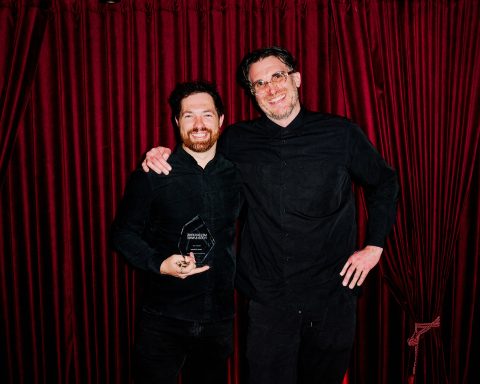From outback memoirs to inner-city thrillers, Australia has always had a strong storytelling tradition. But as the publishing world adapts to the digital age, so too must its writers. Gone are the days when aspiring authors were tethered to pen and paper or struggling to format manuscripts in outdated word processors. Today, novel software—purpose-built digital tools for fiction writing—is transforming how Australian writers create, plan, and publish their stories. And for the new generation of storytellers emerging across the country, these platforms are offering more than convenience—they’re unlocking creativity, improving productivity, and turning big dreams into published realities.
Whether it’s the teenage fantasy writer in suburban Brisbane or the self-publishing crime novelist based in regional Victoria, more Australian authors are turning to novel software to structure their plots, track character arcs, and build immersive worlds with clarity and confidence. These digital tools are rapidly becoming the backbone of a growing literary ecosystem—bridging the gap between talent and technology, and helping ensure that every voice has the chance to be heard.
Boosting Confidence with Built-In Structure and Support
For many new authors, one of the biggest challenges isn’t writing beautiful prose—it’s knowing how to structure an entire novel from beginning to end. Traditional word processors offer little beyond a blinking cursor, leaving first-time writers overwhelmed by the blank page. Novel software, however, is designed specifically to counteract this paralysis by offering built-in frameworks, chapter breakdowns, and templates that guide authors through the writing process.
Programs such as Scrivener, Plottr, and Dabble allow writers to organise scenes visually, link character notes to specific chapters, and drag and drop plot elements across timelines. This structure provides a sense of control that is especially empowering for emerging writers still finding their process. For Australia’s next generation of authors—many of whom juggle study, jobs, or parenting while trying to write—this kind of intuitive organisation means more momentum and less second-guessing.
Even more valuable are the creative prompts and planning tools embedded in some platforms, which offer scene suggestions, conflict checklists, or pacing insights. Instead of stalling at chapter three or rewriting endlessly, authors can move forward with purpose, knowing they’re building something coherent and complete. That confidence boost is often the difference between giving up and finishing a manuscript.
Fostering Community Through Collaborative Writing Spaces
One of the most exciting trends in Australian writing today is the rise of online literary communities, many of which are powered by novel software platforms that integrate social features. For young and emerging writers, especially those in remote or regional areas, access to writing groups, workshops, or publishing mentors has traditionally been limited. Novel software changes that.
Apps such as Novlr and Campfire allow users to not only work on their manuscripts but also connect with other writers through forums, critique swaps, and co-authoring features. These digital spaces provide a sense of belonging, support, and constructive feedback—crucial elements for writers at the beginning of their careers. Instead of writing in isolation, authors become part of a broader creative ecosystem where they can share progress, exchange tips, and celebrate milestones.
This collaborative environment is particularly powerful for Australia’s diverse writing community. Writers from different cultural backgrounds, gender identities, and regions can find peers and readers who value their perspectives. In doing so, they’re building a literary future that is more inclusive, representative, and democratised—powered not by gatekeepers, but by shared passion and digital connection.
Streamlining the Self-Publishing Journey
Australia’s independent publishing scene is thriving, with more authors choosing to self-publish than ever before. However, the process of taking a manuscript from first draft to finished book can be daunting without the right tools. This is where novel software plays a transformative role—streamlining everything from editing to formatting to distribution.
Platforms such as Atticus and Reedsy offer integrated book formatting features that ensure a professional layout for both print and digital editions. Others include submission tracking systems, metadata input options, and cover design tools—all within a single dashboard. For Aussie authors looking to self-publish via Amazon KDP, IngramSpark, or even local bookstores, this consolidation saves time, reduces stress, and boosts the chances of a successful launch.
Importantly, this also lowers the financial barriers to publishing. Instead of hiring multiple freelancers or software licenses, writers can manage key publishing steps within one platform—empowering those with limited budgets to produce high-quality books. For students, hobbyists, or regional writers without access to metropolitan publishing resources, this independence is not just convenient—it’s revolutionary.
Making Writing More Accessible Across Devices and Lifestyles
Today’s emerging Australian writers are not confined to traditional writing spaces. Many are creating stories during commutes, in university libraries, between hospitality shifts, or while raising children. As a result, mobile compatibility and cloud-based storage have become essential features of modern novel software—and they’re making writing more accessible than ever.
Apps such as LivingWriter and Bibisco sync across desktop, tablet, and mobile devices, allowing users to pick up their story wherever they are. Cloud storage ensures that no scene is lost due to hardware failure, and offline modes mean productivity doesn’t stop without Wi-Fi. This flexibility allows writing to integrate seamlessly into modern life rather than requiring dedicated, uninterrupted hours that many can’t spare.
For neurodivergent or disabled writers, novel software often includes features such as distraction-free modes, custom fonts, voice-to-text tools, or colour contrast options that make the writing experience more comfortable and adaptable. These built-in accommodations help ensure that storytelling remains inclusive—something that’s increasingly important in a country striving to celebrate diversity in all its forms. By integrating a high‑accuracy speech to text converter like Transkriptor, writers can effortlessly turn spoken ideas into written form and maintain creative flow.
Encouraging Discipline Through Analytics and Goal Setting
Consistency is often the hardest part of writing a novel, especially for first-time authors who are still developing their creative routines. Novel software meets this challenge head-on by offering tracking features, analytics, and motivational tools that help turn writing into a manageable, measurable practice.
Many platforms allow writers to set daily word count goals, track progress over time, and receive notifications when targets are hit. Some even offer gamification elements such as streak counters, milestone badges, or digital “writing sprints” that mimic the communal feel of NaNoWriMo. These features help turn the long, solitary journey of writing into a series of achievable steps, making progress feel visible and rewarding.
In Melbourne, Sydney, and beyond, emerging writers are finding that these tools make the difference between procrastination and publication. By making the process transparent and goal-oriented, novel software helps demystify what was once overwhelming. It turns “maybe someday” into “I’ve got this.”
Conclusion: Writing the Future with Confidence and Creativity
For Australia’s emerging authors, the path to publication has never been more dynamic—or more supported. Novel software is not just a technological trend; it’s a creative enabler that’s levelling the playing field, breaking down barriers, and reshaping how stories are written, refined, and shared. From helping writers stay focused and structured, to facilitating connections and boosting productivity, these platforms are nurturing the next wave of literary talent from all corners of the country.
As the tools of storytelling continue to evolve, one thing remains constant: the power of a great story. With novel software in their digital toolkit, Australia’s next generation of writers are better equipped than ever to dream big, write boldly, and shape the cultural conversation—one chapter at a time.








